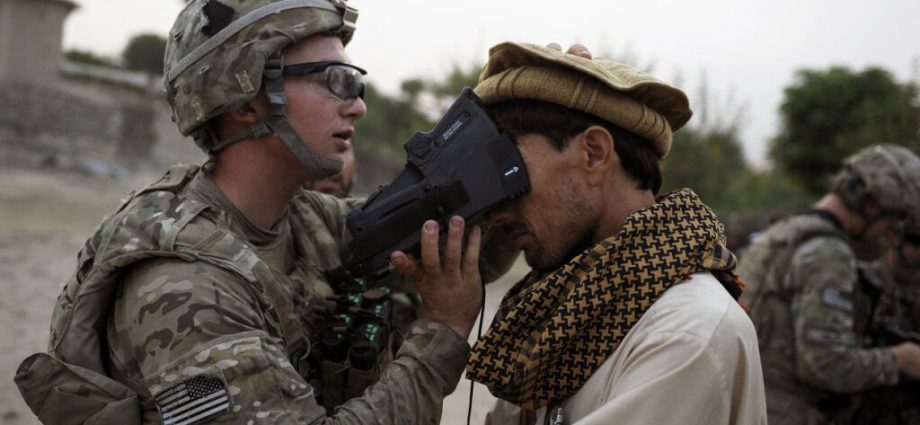More screaming evidences of US’s ‘dubious’ Global War on Terrorism (GWOT) that the country waged nearly two decades ago are emerging.
Taliban has now got hold of Handheld Interagency Identity Detection Equipment or HIIDE, a sophisticated device, which was long used in the global war on terror.One of the most publicised credentials is that same device was used to identify Osama bin Laden during the 2011 raid on his Pakistani hideout.
Investigative war reported Annie Jacobsen said the Pentagon had a goal to gather biometric data on 80 percent of the Afghan population to locate terrorists and criminals.
According to some observers, the US’s callous handling of such sophisticated devices using which Taliban is targeting spies and security people, who once helped US army, gives indication of America’s reluctance to protect its allies who were Ground Zero sources during the offensive against Taliban.
Former army intelligence officer Welton Chang said the HIIDE system may fall into the wrong hands of Pakistan’s ISI, which can help Taliban decoding some parts.
Chang, who is also chief technology officer for Human Rights First, also told US must rethink about using such a system in critical places such as Afghanistan.
US’s ‘shocking surrender’ to Taliban is the topic of discussion everywhere
Since the fall of secular Ashraf Ghani government on August 15, reports of Taliban hounding the spies, security officials and US sympathisers, who aided the NATO forces are emerging in the media.
The most among the brutal executions circulating on Twitter appeared to be the murder of Afghan police chief Haji Mullah Achakzai, who was seen kneeling on the ground blindfolded before being gunned down.
Now, hundreds of other security people and ex-government informers are being tracked by Taliban who have seized U.S. military biometrics devices that could aid in the identification of Afghans who assisted coalition forces, current and former military officials.
A good number of HIIDE were seized last week during the Taliban’s offensive.
According to Joint Special Operations Command official and three former U.S. military personnel, who broke the news fear that sensitive data could be used by the Taliban to identify those people and execute them.
They said HIIDE devices contain identifying biometric data such as iris scans and fingerprints.
Besides, biographical information and large centralized databases can be accessed through the device.
There is no exact idea about how much of U.S. military’s biometric database on the Afghan population has been compromised, but there is least doubt about the gravity of the matter, they said.
U.S. military is considered superior most among armies for tracking terrorists and other insurgents using the technique.
Taliban can easily access biometric data on Afghans who assisted the U.S. A U.S. military contractor said HIIDE was used as a biometric ID tool to help ID locals working for the coalition.
An Army Special Operations veteran also echoed Chang. He said Taliban may require Pakistan’s ISI’s help in obtaining additional tools to process the HIIDE data.
“The Taliban doesn’t have the gear to use the data but the ISI do,” the former Special Operations official said.
The ISI has been known to work closely with the Taliban.

